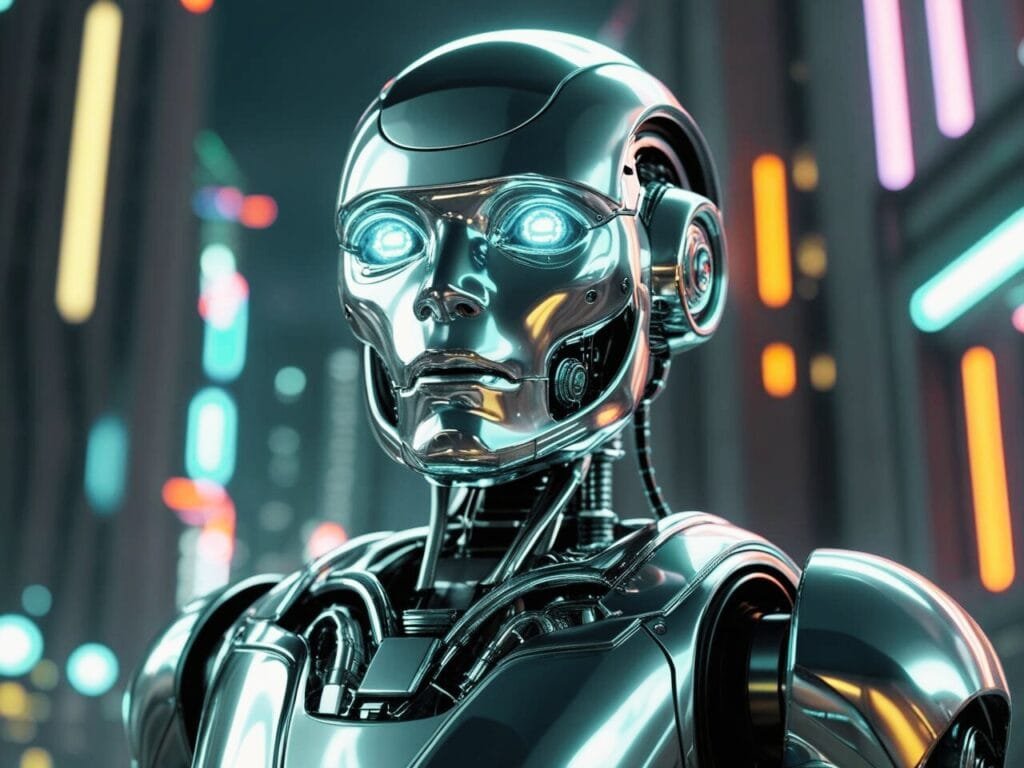The integration of artificial intelligence (AI) in robotics is transforming industries and redefining the capabilities of machines. What was once a sci-fi dream is now a reality, with AI-powered robots performing complex tasks autonomously, learning from their environments, and improving efficiency across sectors like manufacturing, healthcare, and logistics. This article explores the synergy of robotics Artificial Intelligence, its applications, benefits, and real-world impact, shedding light on how this technology is shaping a smarter, more automated future.

ALSO READ: The Power and Future of Artificial Intelligence
What is Robotics Artificial Intelligence?
Robotics is the interdisciplinary field of designing, building, and programming mechanical devices to perform tasks autonomously or semi-autonomously. Artificial Intelligence, on the other hand, involves creating systems that mimic human intelligence, enabling machines to learn, reason, and adapt.
When combined, robotics and AI create intelligent machines capable of perceiving their surroundings, making decisions, and executing tasks with minimal human intervention. These AI-powered robots leverage advanced algorithms, machine learning, and sensor data to navigate dynamic environments and perform complex functions, revolutionizing industries worldwide.
Role of AI in Robotics
AI serves as the brain behind modern robotics, enabling robots to go beyond pre-programmed instructions. By integrating AI, robots can:
- Learn from Experience: Machine learning enables robots to improve performance over time by analyzing data and adapting to new scenarios.
- Process Visual Data: Computer vision enables robots to interpret their surroundings, crucial for tasks like navigation and object recognition.
- Interact Naturally: Natural language processing (NLP) facilitates seamless human-robot communication, making robots more user-friendly.
The fusion of AI and robotics creates a powerful synergy, often referred to as robotic artificial intelligence, driving innovation and expanding the scope of robotic applications.
ALSO READ: The Role of Robotics in Everyday Life
How is AI Used in Robotics?
AI enhances robotics through several key technologies, enabling robots to perform tasks with greater autonomy and precision. Here’s how AI is applied in robotics:
Computer Vision
- Object Recognition: AI-powered vision systems allow robots to identify objects in real-time, essential for tasks like sorting, assembly, or autonomous navigation.
- Visual Servoing: Robots use AI to track and manipulate objects with precision, such as in manufacturing processes like welding or painting.
- Environmental Mapping: AI processes sensor data to create maps of surroundings, enabling robots to navigate complex or unpredictable environments.
Natural Language Processing (NLP)
- Human-Robot Interaction: NLP enables robots to understand and respond to voice or text commands, fostering intuitive collaboration with humans.
- Voice Control: Robots can be operated via voice, improving accessibility for diverse users.
- Sentiment Analysis: AI analyzes human emotions through text or speech, allowing robots to adapt their responses for better interaction.
Machine Learning
- Autonomous Decision-Making: Machine learning algorithms enable robots to make real-time decisions based on environmental data, ideal for dynamic settings.
- Reinforcement Learning: Robots learn through trial and error, mastering tasks like walking or grasping objects.
- Predictive Maintenance: AI analyzes sensor data to predict equipment failures, minimizing downtime in industrial settings.
ALSO READ: Master the Modern Industrialization Mod Robot Arm
How Do Robotics and AI Work Together?
Robotics and AI work in tandem to create intelligent, adaptable machines. AI robots use computer vision, sensors, and machine learning to sense their environment, process data, and make informed decisions. For example:
- Navigation: AI processes sensor inputs to help robots avoid obstacles and plan efficient paths.
- Task Execution: Machine learning enables robots to refine their skills over time, improving accuracy and efficiency.
- Human Interaction: NLP allows robots to understand and respond to human commands, enhancing collaboration.
AI in robotics is categorized into three types:
- Weak AI: Focused on specific tasks with predefined responses, like virtual assistants (e.g., Siri or Alexa).
- Strong AI: Enables robots to perform complex tasks autonomously without supervision, such as self-driving cars or humanoid robots.
- Specialized AI: Designed for repetitive, task-specific functions, like industrial robots for welding or assembly.
Difference between AI and Robotics
Artificial Intelligence (AI) and robotics are related fields in engineering. Robotics designs machines to perform physical tasks, while AI allows these machines to perceive, learn, and make decisions.
Artificial Intelligence (AI) involves algorithms that enable machines to analyze data, recognize patterns, and make decisions without explicit programming.
AI powers everyday technologies such as Google’s search algorithms, re-ranking systems, and conversational chatbots like Gemini and ChatGPT by OpenAI.
Robotics focuses on designing, building, and operating programmable physical systems that can work independently or with minimal human help. These systems use sensors to gather data and may follow programmed instructions to move, pick up objects, or communicate.
Benefits of AI in Robotics
The integration of AI into robotics offers transformative advantages, making robots more capable, efficient, and safe.
1. Enhanced Capabilities
- Complex Task Execution: AI enables robots to handle intricate tasks like surgical procedures or navigating uncharted environments.
- Adaptability: Machine learning allows robots to learn from data, adapt to new conditions, and improve performance over time.
2. Increased Efficiency and Productivity
- Automation of Repetitive Tasks: AI-powered robots automate mundane tasks, freeing human workers for creative or strategic roles.
- Error Reduction: AI’s precision minimizes errors, improving product quality and operational efficiency in industries like manufacturing.
3. Improved Safety
- Hazardous Environments: AI robots can operate in dangerous settings, such as disaster zones or nuclear facilities, reducing risks to human workers.
- Collaborative Safety: AI ensures robots work safely alongside humans, detecting potential hazards and adjusting behavior accordingly.
Applications of AI in Robotics
AI in robotics is revolutionizing multiple industries by enabling autonomous, intelligent operations. Key applications include:
- Autonomous Navigation: Robots use AI to navigate warehouses, hospitals, or urban environments, optimizing logistics and delivery.
- Predictive Maintenance: AI analyzes equipment data to predict failures, reducing costs and downtime in manufacturing.
- Surgical Robotics: AI-assisted robots enhance precision in surgeries, improving outcomes in healthcare.
- Quality Control: AI-powered robots inspect products for defects, ensuring high standards in production lines.
- Search and Rescue: AI robots navigate disaster zones to locate survivors and assess damage, aiding emergency response.
- Human-Robot Collaboration: Robots assist workers in factories or offices, handling repetitive tasks to boost productivity.
- Customer Service: AI robots provide personalized experiences in retail or hospitality, interacting with customers in real-time.
Real-Life Applications of AI-Powered Robots
AI-powered robots are already making a significant impact across various sectors:
- Voice Assistants: Siri, Alexa, and Google Assistant use NLP to respond to user queries and control smart devices.
- Streaming Services: Netflix and Spotify use AI to recommend content based on user preferences. They analyze data to suggest movies, shows, or music tailored to individual tastes.
- Social Media: Platforms like Instagram and X employ AI to personalize feeds, recommend connections, and filter harmful content.
- Email Filtering: AI systems in Gmail or Outlook detect spam and prioritize important emails.
- Fraud Detection: Banks use AI robots to monitor transactions and flag suspicious activities, enhancing security.
- Autonomous Vehicles: Self-driving cars from companies like Tesla rely on AI for navigation and decision-making.
- Healthcare Robots: AI-powered surgical robots, like the da Vinci system, assist surgeons with precision and efficiency.
Conclusion
The fusion of robotics and artificial intelligence is reshaping the technological landscape, driving innovation and efficiency across industries. From autonomous vehicles to surgical robots, AI-powered robots are enhancing capabilities, improving safety, and transforming how we interact with technology. As this synergy continues to evolve, the future promises even more advanced, adaptable, and intelligent robotic systems, paving the way for a smarter, more automated world.

